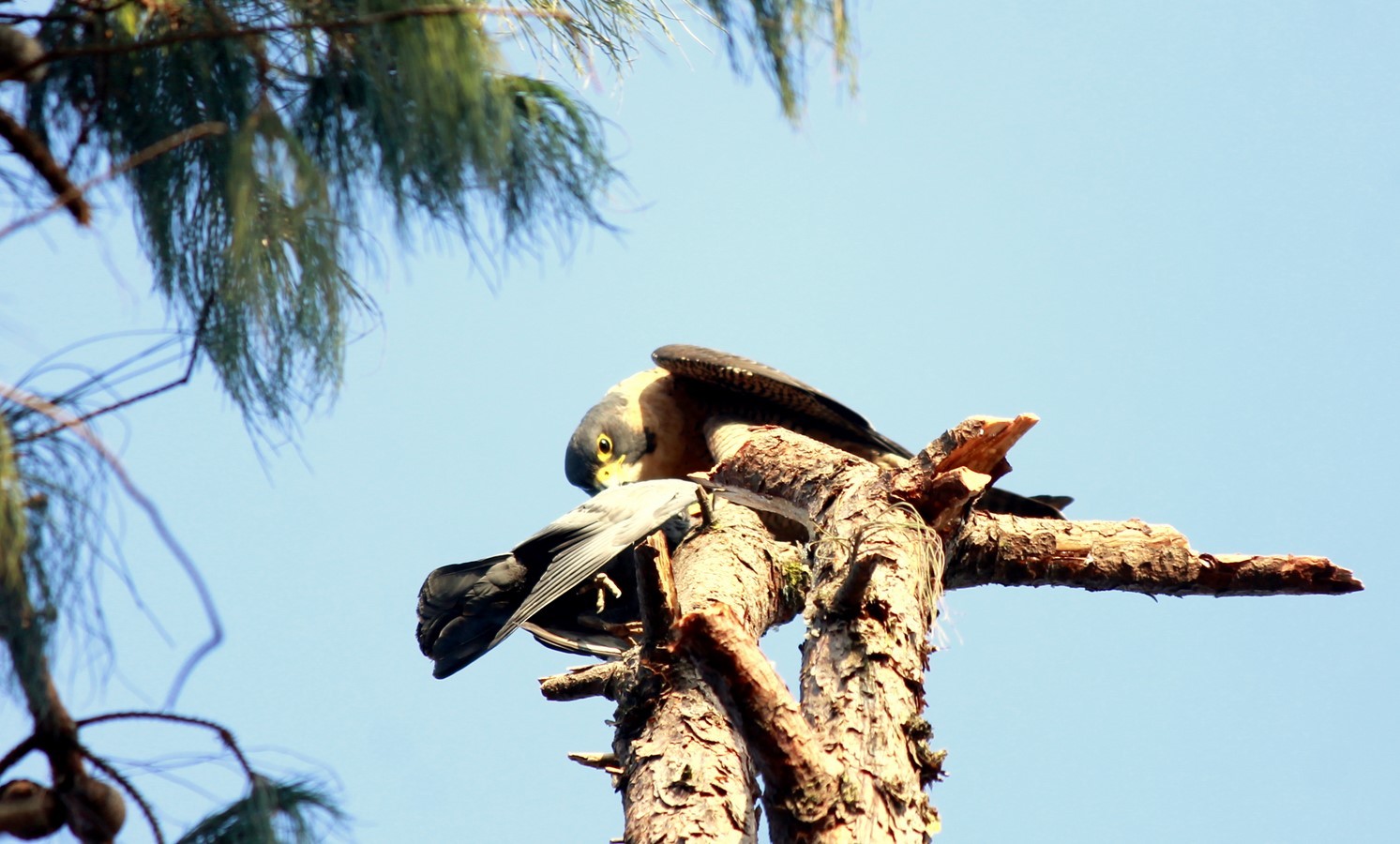Peregrine Falcon
A species of True Falcons, Also known as Wandering Falcon, Dutch Hawk, Peregrine Scientific name : Falco peregrinus Genus : True Falcons
Peregrine Falcon, A species of True Falcons
Also known as:
Wandering Falcon, Dutch Hawk, Peregrine
Botanical name: Falco peregrinus
Genus: True Falcons
Content
Description People often ask General Info
 Photo By Skrissh , used under CC-BY-SA-4.0 /Cropped and compressed from original
Photo By Skrissh , used under CC-BY-SA-4.0 /Cropped and compressed from original Description
The peregrine Falcon is a fast-flying bird. The large falcon has a wide global range that can affect its coloring. Its speed in the air allows it to easily capture prey that includes pigeons. The falcon’s habitats range from urban areas to coastal regions. The bird has even been spotted roosting near shorebirds.
Size
34 - 58 cm
Life Expectancy
17 years
Nest Placement
Cliff
Clutch Size
2 - 5 eggs
Incubation Period
1 brood
Number of Broods
29 - 32 days
Nestling Period
35 - 42 days
Feeding Habits
Peregrine Falcon predominantly preys on a vast array of bird species, ranging from ducks to songbirds, and includes bats in its diet. While it infrequently hunts mammals, it may consume small rodents. Coastal peregrine Falcon have a diet heavily focused on seabirds. Peregrine Falcon is also known to kleptoparasitize other raptors for fish and rodents.
Habitat
Peregrine Falcon inhabits a broad range of environments globally, favoring open landscapes such as cliffs and urban structures for nesting. Their adaptability spans from sea level to altitudes of 12,000 feet, in habitats from tundra and deserts to forests and mountains. Coastal regions, riverbanks, and cities with plentiful prey, like Rock Pigeons, are also preferred, especially during migration and winter.
Nest Behavior
The male peregrine Falcon proposes several nest sites and the female selects one. Nesting includes scraping a depression for eggs, with no timing specified. Both parents share in incubation and chick rearing.
Nest Characteristics
Peregrine Falcon typically chooses cliff ledges, human-made structures, or repurposed nests from other birds. They create a simple scrape, about 9 inches across and 2 inches deep, without additional materials.
Dite type
Avivorous
People often ask
General Info
Feeding Habits
Bird food type
Behavior
Peregrine Falcon exhibit remarkable flying abilities, distinguishing them as exceptional aviators in the avian realm. A typical day for peregrine Falcon involves patrolling its territory at impressive speeds ranging from 24 to 33 mph, escalating dramatically to 67 mph during the chase of prey. These birds are notorious for their breathtaking stoop, a dive that can reach astonishing speeds up to 238 mph for capturing prey. High perches serve as observation points, from which they may also initiate their hunting dive from great heights, employing various strategies including level pursuit and occasionally ground hunting. Despite their prowess, peregrine Falcon maintain a cautious awareness of their own predators, such as eagles and owls.
Scientific Classification
Phylum
Chordates Class
Birds Order
Diurnal Birds of Prey Family
Falcons and caracaras Genus
True Falcons Species
Peregrine Falcon